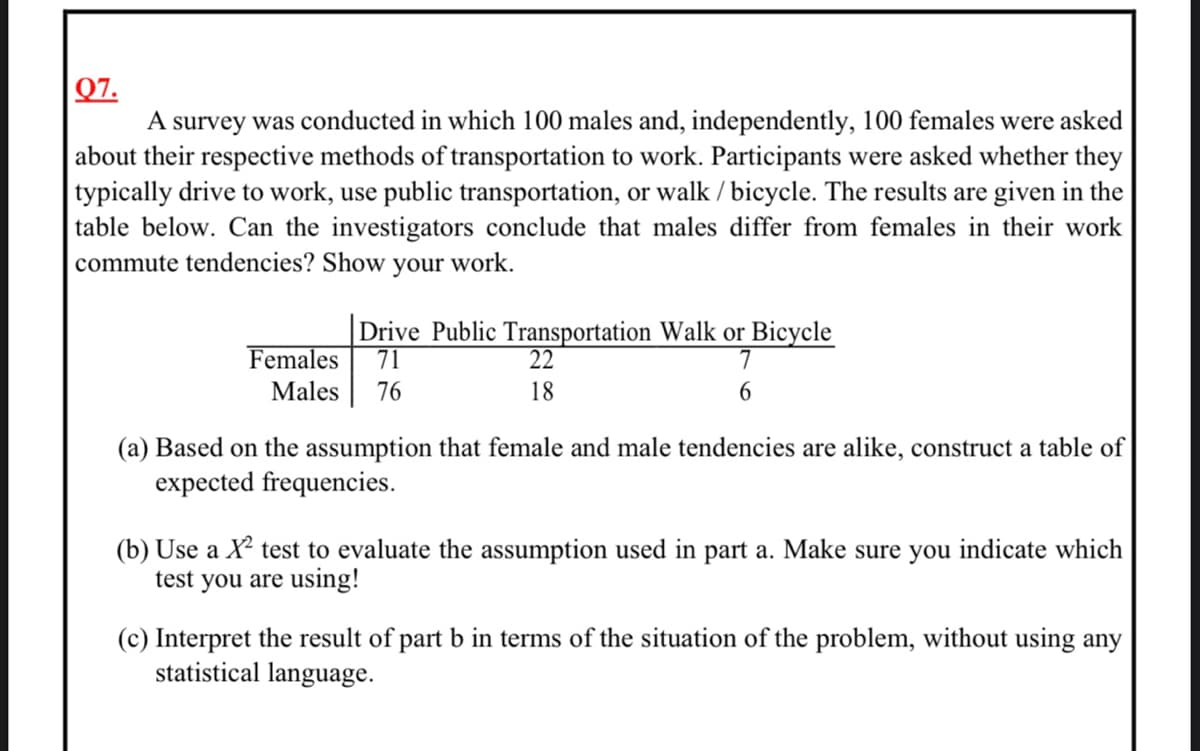Q7. A survey was conducted in which 100 males and, independently, 100 females were asked about their respective methods of transportation to work. Participants were asked whether they typically drive to work, use public transportation, or walk / bicycle. The results are given in the table below. Can the investigators conclude that males differ from females in their work commute tendencies? Show your work. Drive Public Transportation Walk or Bicycle 71 Females 22 Males 76 18
Q7. A survey was conducted in which 100 males and, independently, 100 females were asked about their respective methods of transportation to work. Participants were asked whether they typically drive to work, use public transportation, or walk / bicycle. The results are given in the table below. Can the investigators conclude that males differ from females in their work commute tendencies? Show your work. Drive Public Transportation Walk or Bicycle 71 Females 22 Males 76 18
Algebra & Trigonometry with Analytic Geometry
13th Edition
ISBN:9781133382119
Author:Swokowski
Publisher:Swokowski
Chapter7: Analytic Trigonometry
Section7.2: Trigonometric Equations
Problem 98E
Related questions
Question

Transcribed Image Text:Q7.
A survey was conducted in which 100 males and, independently, 100 females were asked
about their respective methods of transportation to work. Participants were asked whether they
typically drive to work, use public transportation, or walk / bicycle. The results are given in the
table below. Can the investigators conclude that males differ from females in their work
commute tendencies? Show your work.
Drive Public Transportation Walk or Bicycle
22
Females
71
7
Males
76
18
6
(a) Based on the assumption that female and male tendencies are alike, construct a table of
expected frequencies.
(b) Use a X² test to evaluate the assumption used in part a. Make sure you indicate which
test you are using!
(c) Interpret the result of part b in terms of the situation of the problem, without using any
statistical language.
Expert Solution
This question has been solved!
Explore an expertly crafted, step-by-step solution for a thorough understanding of key concepts.
Step by step
Solved in 3 steps

Recommended textbooks for you

Algebra & Trigonometry with Analytic Geometry
Algebra
ISBN:
9781133382119
Author:
Swokowski
Publisher:
Cengage

Algebra & Trigonometry with Analytic Geometry
Algebra
ISBN:
9781133382119
Author:
Swokowski
Publisher:
Cengage